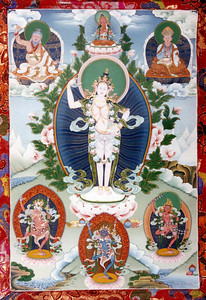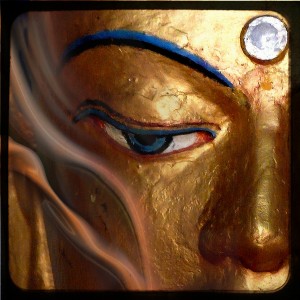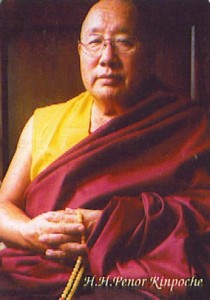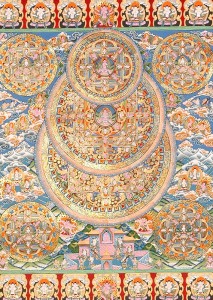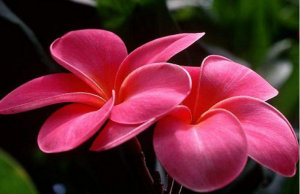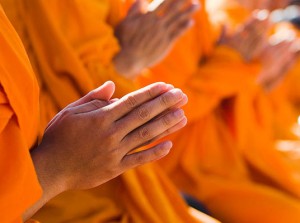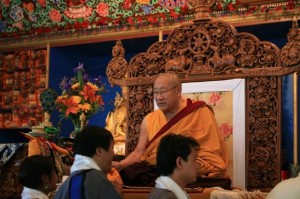
An excerpt from a teaching by Jetsunma Ahkon Lhamo from the Vow of Love series
As long as the idea of self exists, self will experience other with either attraction, or repulsion. There is no other way to experience other. Whether it’s subtle or not, even if you are a proponent of New Age philosophy, and are supposed to love everybody and have unconditional positive regard towards others, if you could really examine your mind with determination, courage, innocence and willingness, you would discover that you are either attracted to or repulsed by everything you see, no matter how you gloss it over. No matter what you say, the karma is still forming. That is how the consequences of one’s life actually manifest: through that constant inter-reactive relationship, through that interplay, through attraction and repulsion, through desire. That’s how it’s possible for you to be born. That’s how it’s possible for you to do things you feel uncontrollably forced to do.
Even if we are so convinced that we know all of these teachings, don’t we still get into trouble? Don’t we find that we react to circumstances in a way that is not skillful? Don’t we, in fact, on an on-going basis make everything worse? I mean, it’s true, if we are honest with ourselves. Every time we react, we make things worse. Even when we can’t see that we’ve made things worse, I’m telling you this is the truth: we are constantly compounding the karma of our own minds. Even if in retrospect, we could see that we should have been loving, and we should have been kind and good, blah, blah, blah, blah, still, we are compulsive about it. We are what we are. We are ‘feeling junkies.’ We are hooked on sensual experience. And we react to it.
What then is the answer? If all of this is true, and desire is the foundation of all suffering, then what if the Buddha is right? What if all of suffering comes from the belief in self-nature? Will it do to pacify our minds with positive thinking? Will it do to walk around with the idea or the New Age philosophy saying, “Oh, I’m already enlightened because I understand I am the creator, or one.” I’d have to say you’re talking about two selves there. You’re talking about ‘creator’ and ‘I,’ and so long as there is distinction, so long as there is the belief in self-nature, you still have desire. You still have attraction and repulsion. You still have hope and fear. You haven’t gone yet into a deep and profound understanding of the emptiness of self-nature. Of course, we have to do that through meditation. There is no ordinary language or ordinary experience that will teach us that profound understanding.
The best thing to do, actually, is to find a qualified teacher who can begin to help you, not only in terms of giving you the words – the verbal teachings – but also some kind of virtuous or valuable energy transmission. On the Vajrayana path, that is done through the transmission of the lineage. The teachings on the nature of emptiness, the teachings on the generation-stage practices, all of the different teachings that we receive here, are passed down through a lineage. That lineage originates in the mind of enlightenment, in the primordial state. It then is transmitted to us. It doesn’t stop there. The minute we receive an empowerment, we’re not going to instantly become enlightened. I wish it were that easy, but it is not. At that point, we are qualified to practice, and it is through the practice and our meditation – with the help of the transmission of the lineage – that we will achieve results.
Copyright © Jetsunma Ahkon Lhamo. All rights reserved
